The family-owned motel that flowered along New England’s roads after World War II has grown increasingly scarce. Today, there are one quarter as many independent motels as there were in the year John F. Kennedy became president.
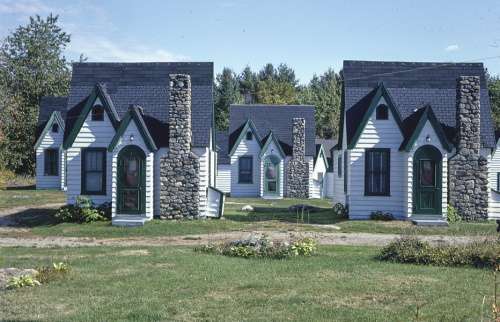
Hearthside Village, Bethlehem, N.H. Photo by John Margolies, Library of Congress, Prints and Photographs Division
The vintage motel and the tourist court do still exist in New England, though you might have to look for them. Some got run-down and seedy after interstate highways bypassed them. They’ve become a standing joke in popular culture as “no-tell motels” or “the Bates Motel.” The Simpsons featured a motel called the “Sleep-Eazy Motel,” with burned-out lights that read “Sleazy Motel.
“The business marches along a depressing decline from nightly vacation rates to weekly apartment rents,” wrote a motel historian.
Many motels and tourist courts have been torn down to make way for suburban sprawl. But some still do survive as neat, clean, affordable havens along New England’s mountains and beaches.
But how did the ubiquitous roadside motel rise – and fall – so fast?
Tourist Camps
The motel started out as a “tourist camp,” a space in a farmer’s field or along a body of water where motorists could pitch their tents. But from the very beginning, the federal government played a big part in the evolution of the motel.
Teddy Roosevelt got the ball rolling in 1901 when he told Congress he wanted free campgrounds on public lands.
His cousin, Franklin, created the Civilian Conservation Corps in 1933, which built campgrounds around the country, including two at Acadia National Park. As with other campsites on federal lands, they provided picnic grounds, tent space, restrooms and running water.
“The first public campgrounds in the United States were nothing more than large, dedicated clearings, free of trees, within which to concentrate groups of tourists,” wrote Martin Hogue in A Short History of the Campsite.
Then along came the trailer, and with it a bad reputation. People complained about the loose morals, the littering and the noise that “tin can tourists” brought with them. One postcard described the tin can tourists as having “one shirt and a $20 bill — and they didn’t change either.”
Cabin Camps and Tourist Courts

The Coastal Motel, Wells, Maine. Photo by John Margolies, courtesy Library of Congress, Prints and Photographs Division
The cabin camp emerged as America’s highway network grew along with the population. According to Smithsonian Magazine, farmers and other businesspeople would make deals with an oil company, put up a gas pump and built a few shacks. The cabin camps weren’t exactly luxe. Often dingy, they usually lacked running water or electricity.
But other roadside amenities, such as Howard Johnson’s restaurants, began to proliferate, adding to the allure of automobile travel.
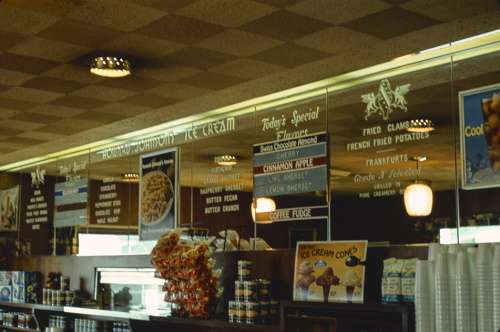
Interior of the Howard Johnson’s in Niantic, Conn. Photo by John Margolies,, Library of Congress, Prints and Photographs Division
By the 1930s a homier alternative became popular: the cottage court, also known as the tourist court. More expensive than the cabin camps, they had indoor plumbing and electricity. They were mom-and-pop affairs, with a shared lawn and cottages decorated with standard themes.
Motels didn’t always accept all comers. For African-Americans, travel was a challenge. Many carried the Negro Motorists Green Book, a guide to accommodations that didn’t threaten embarrassment or danger.
Rise of the Motel
Meanwhile, the first so-called motel, or ‘motor hotel,’ opened in 1925 as the Milestone Mo-Tel in San Luis Obispo, Calif.
After World War II, the growing middle class demanded more and more roadside lodging as the federal highway system expanded. People built motor courts at a furious pace. By 1947, there were 22,000 motor courts in the United States.
Bar Harbor
The motels that sprang up in Bar Harbor, Maine, demonstrate the great economic leveling that took place during most of the 19th century. The town changed from a Gilded Age resort for millionaires into a middle-class tourist destination.
After the 1947 Maine fires wiped out many of the Bar Harbor mansions, cottage courts and motels replaced them.
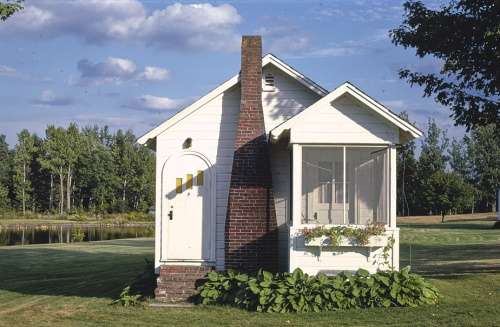
Mount Desert Island Cabins, one unit, Bar Harbor, Maine. Photo by John Margolies, Library of Congress, Prints and Photographs Division
Throughout the United States, 50,000 motels and motor courts served motoring tourists by 1951.
Golden Age of the Motel
The 1950s and 1960s were the golden age of the motel. Mom and pop added color televisions, swimming pools and the Magic Fingers vibrating bed. Neon signs advertised their amenities along strips of road like the Berlin Turnpike in Connecticut, along the Massachusetts coast, on Route 1 in Maine and in New Hampshire’s White Mountains.
The industry peaked in 1961, with 61,000 motels in America. Today, there are perhaps a quarter of that. The mom and pop motel fell to motel chains like Holiday Inn and Best Western, then to discount hotels like Hampton Inn and Marriott.
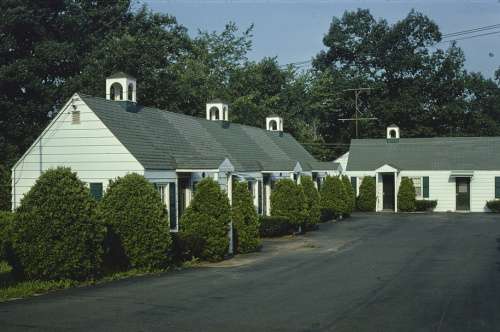
Colonial Park Motel, Library of Congress, Prints and Photographs Division, Meriden Conn. Photo by John Margolies,
But many still cherish the retro comfort and convenience – not to mention the individuality – of the mom-and-pop motel. Some preservationists want to see them saved. Hartford Courant writer Dennis Barone, for example, argued the Berlin Turnpike should be named an official scenic road.
This story about the New England motel was updated in 2022.
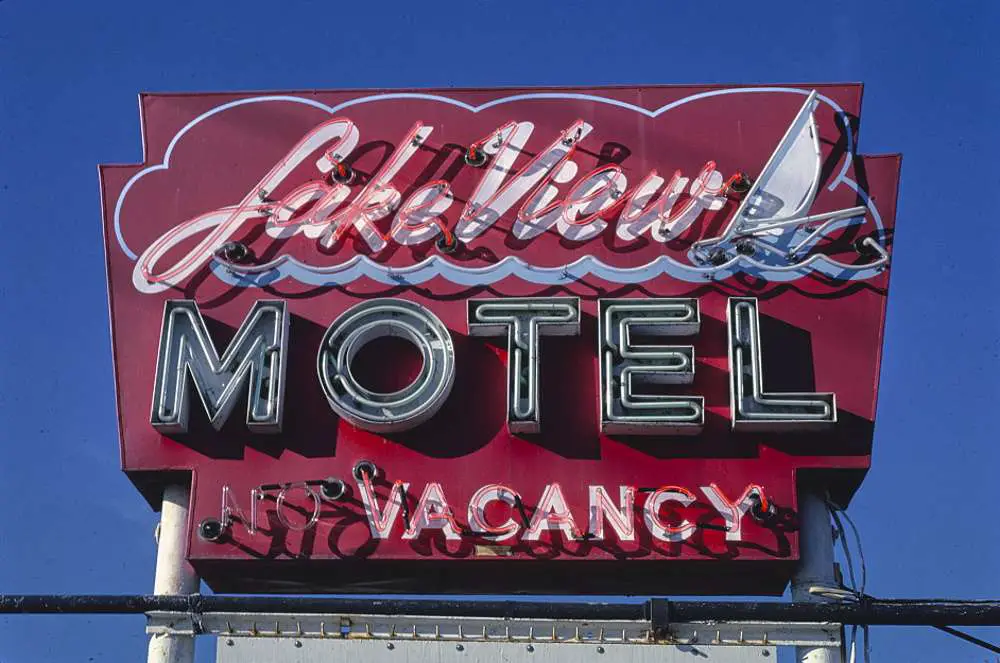
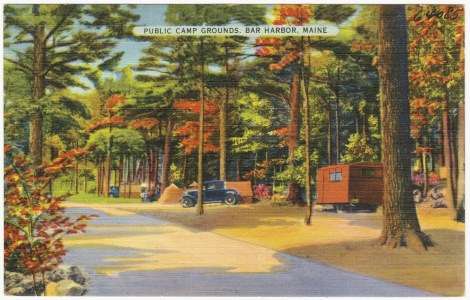
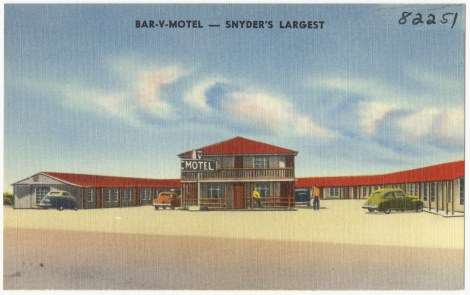
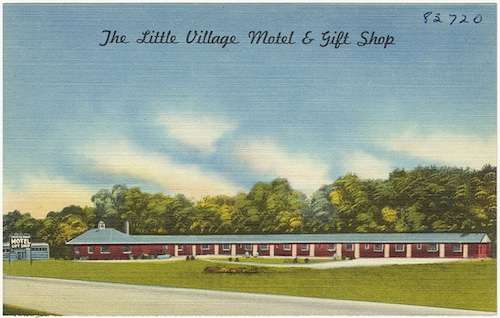
2 comments
Just an FYI – the picture and caption towards the end of the article mentions the “Wigwam Motel” facing the beach at Misquamicut, RI. Actually that postcard is of the “Wigwam Hotel” built c. 1904, one of the first hotels built at “Pleasant View” (the name of Misquamicut Beach from about 1900-1928), and was destroyed by the Hurricane of 1938. During the 1950’s, a new “(Paddy’s) Wigwam Motel” was then built across the street from the hotel property, and on the original site was built a restaurant/bar called “Paddy’s”. The namesake motel was a cheaper replica of the original, and had the typical “motel” style of the time (single story, no frills, smaller rooms, etc.), until the motel fell into disrepair and was eventually taken down in sections between the 1990’s and early 2000’s. “Paddy’s” restaurant, however, still survives to this day and is a popular bar and meeting place.
Thank you for clarifying that!
Comments are closed.